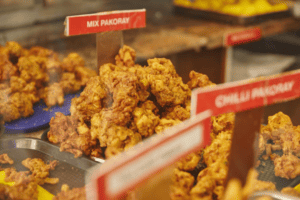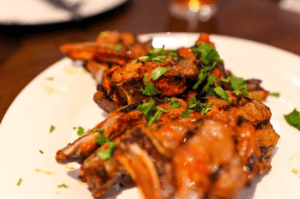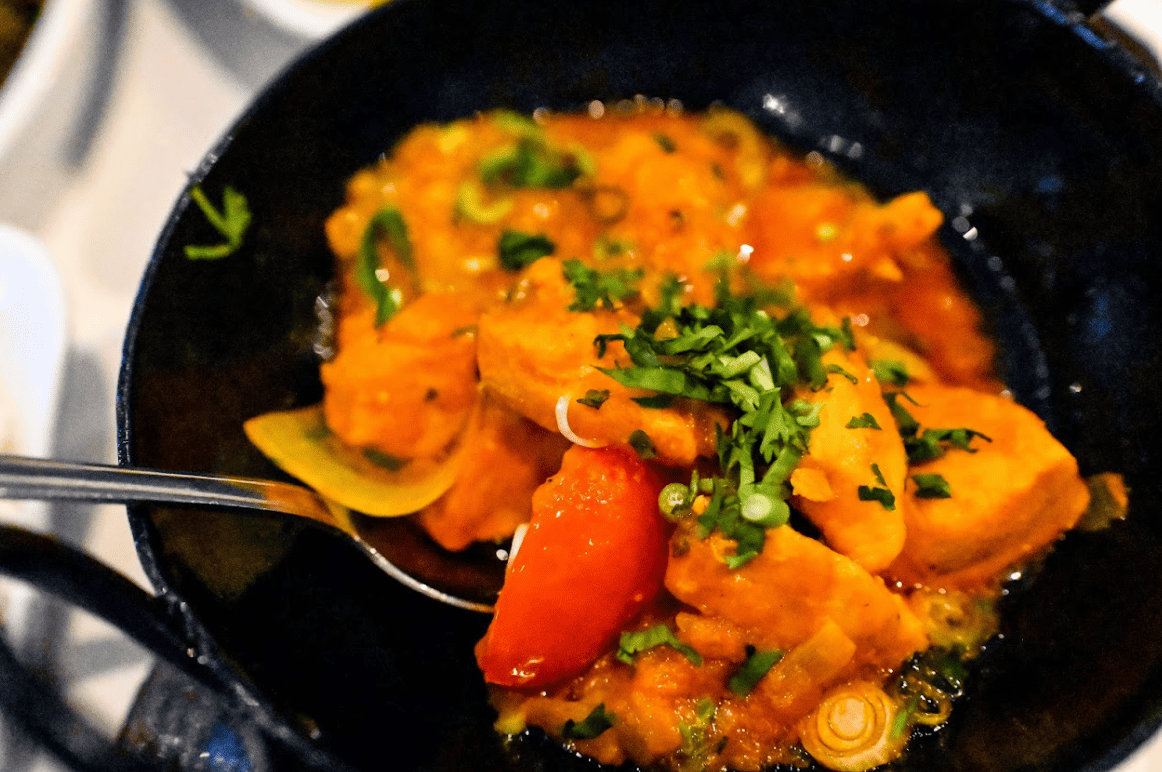In the dynamic heart of East London, a culinary marvel has firmly established itself, reshaping the area’s gastronomic scene. Among the rich variety of flavors and scents, one star stands out distinctly: curry. This emblematic element of Indian cuisine has intricately woven itself into the culinary culture of London. Pioneering this flavorful exploration is the “Indian Food Tours: East London,” a gastronomic journey into the diverse realms of Indian and South Asian cuisines.
As tour participants navigate through the streets of East London, they encounter an array of authentic curries. Each dish presents a unique narrative of spices and traditions. This tour, a celebration of culinary variety, stands as a vivid illustration of curry’s significant impact in London. It demonstrates how a meticulously crafted spice blend can transform basic ingredients into a dish that resonates across diverse palates.
Curry acts as a culinary connector, merging ancient recipes with modern tastes. Its role in East London extends beyond catering to the city’s Indian and South Asian communities; it reflects London’s acceptance and integration of global flavors, adapting and incorporating them into its own culinary identity. While exploring London’s Indian food scene, we reveal not only the flavors and methods behind these popular dishes but also the narratives of migration, adaptation, and culinary creativity that have cemented curry as a central element in London’s gastronomy.
Defining Curry: More Than Just a Spice Blend
Curry, a term deeply rooted in culinary traditions around the world, is often misunderstood as just a spice or a single dish. However, its definition is far more nuanced and varied. The word ‘curry’ itself, anglicized from the Tamil word ‘kaṟi’, originally meant ‘sauce’ or ‘relish for rice’ and was used to describe a variety of dishes in different cultures, particularly those involving a combination of spices and herbs to flavor meat or vegetables.
In essence, curry is a broad term that encompasses a wide range of dishes, prepared in numerous ways depending on the regional culinary practices. While many associate curry primarily with Indian cuisine, its forms and flavors stretch across continents. Southeast Asian curries, for instance, are known for their distinct use of coconut milk, creating a creamy base that’s infused with spices like chillies, coriander, and garlic, but often without cumin, a staple in Indian curries.
In East Asia, countries like Japan have embraced curry, adapting it to include local ingredients like onions, potatoes, and carrots, often served over rice. Japanese curry, initially influenced by British-introduced Indian curry, has evolved into a national dish in its own right.
In the Middle East, dry curries are prevalent, where the sauce is reduced to coat the meat with a potent mix of spices, offering an intense flavor experience. This highlights the versatility of curry, adapting to different culinary techniques and preferences.
The variety of curry in Indian cuisine itself is staggering, reflective of the country’s diverse regions and cultures. From the well-known chicken tikka masala to regional specialties like korma and chettinad, Indian curries vary greatly in ingredients, cooking methods, and spice levels. Ingredients such as turmeric, ginger, and garlic are commonly used, contributing to the rich and complex flavors typical of Indian curries.
The diversity of curry extends to its preparation methods as well. From homemade curry powders to ready-made pastes, the approach to making curry can vary, allowing for personalization and creativity in the kitchen. Whether starting from scratch or using pre-made ingredients, the process of making curry can be as enjoyable as its consumption.
Curry’s Journey to London

The journey of curry to the UK can be traced back to the 18th century when members of the East India Company returned from India, bringing with them a taste for the spiced dishes they had enjoyed there. Curry first appeared in British cookery books in the mid-18th century, with Hannah Glasse’s “The Art of Cookery” (published in 1747) being one of the first to include recipes for Indian pilau and later, curries.
The first Indian restaurant in London, the Hindoostanee Coffee House, was opened in 1810 by Sake Dean Mahomed, a fascinating figure who served in the East India Company’s army before traveling to Britain. This establishment sought to provide an authentic experience of Indian cuisine and culture, though it was short-lived due to competition with other curry houses and the fact that many potential customers could afford to employ Indian cooks.
In the 1840s, sellers of Indian products began promoting curry for its dietary benefits, claiming it aided digestion and invigorated the mind. This period also saw the development of dishes like jalfrezi, initially created to use up leftover meats by cooking them with spices and vegetables.
The Victorian era witnessed a surge in curry’s popularity, thanks in part to Queen Victoria’s fascination with India. Her interest extended to employing Indian servants, one of whom introduced her to various Indian dishes. This royal endorsement helped curry maintain its presence in British cuisine, even as it became less common in fashionable restaurants.
The 20th century saw a significant increase in South Asian immigrants in Britain, particularly from Bangladesh, leading to the rise of Indian restaurants. These restaurants often utilized a “mother sauce” to create various dishes, contributing to a homogenization in the flavors of British Indian cuisine. However, in recent years, there has been a resurgence in the authenticity and diversity of Indian cuisine in the UK, with a growing appreciation for traditional cooking methods and regional specialities.
Curry Beyond Indian Cuisine: London’s Culinary Adaptations

In London’s diverse culinary scene, curry has extended its reach beyond traditional Indian dishes, infusing itself into various facets of British cuisine. One such adaptation is the “Curry Pie,” a delightful fusion of the classic British meat pie with the rich, spiced flavors of curry. This dish represents a unique blend of two culinary cultures, offering a savory, spiced twist on a beloved British staple.
Another notable example is “Coronation Chicken,” a dish that was originally prepared for Queen Elizabeth II’s coronation. This recipe marries cold cooked chicken with a creamy, curry-infused sauce, embodying the fusion of British culinary tradition with the exotic flavors of curry. It has become a popular sandwich filling and salad ingredient, showcasing the versatility and widespread appeal of curry in British cuisine.
Finally, “Kedgeree” stands out as a distinct British breakfast dish with Indian origins. A transformation of the Indian khichdi, Kedgeree blends boiled rice, smoked haddock, hard-boiled eggs, and curry spices, creating a comforting and flavorful dish.
The Health Benefits of Curry
The health benefits of curry stem largely from its blend of spices. Turmeric, a key component, is notable for its anti-inflammatory and antioxidant properties, potentially aiding in preventing certain diseases. Additionally, ginger, another common ingredient in curry, offers digestive benefits and anti-inflammatory effects. These spices contribute significantly to the overall health advantages of consuming curry, making it a beneficial addition to a diet.
Spices like cumin and cardamom in curry also play a vital role in health. Cumin is known for its digestive aid and is a good source of iron, while cardamom may help in lowering blood pressure and improving heart health. The combination of these spices in curry not only enhances flavor but also offers various health benefits, illustrating the nutritious potential of this popular dish.

Explore this flavorful journey with the Indian Food Tours in East London, where the vibrant world of curry unfolds through an array of traditional and innovative dishes. Experience the heritage of Indian cuisine at an authentic Punjabi restaurant and indulge in sweet delights at a local Indian sweet shop. Check out the official Indian Food Tours: East London page for more details and the full list of delicious dishes you’ll taste. Ready to explore the diverse flavors of curry? Book your tour now and savor this unforgettable adventure.
